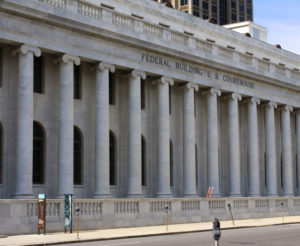The Pension Fund Crisis is Starting to Boil
Early this morning the White House announced that $36 billion was being allocated from the American Rescue Plan (i.e., the 2021 Coronavirus relief package) to shore up the Teamster’s Central States Pension Plan. The reason offered was that failure to do so would jeopardize the plan and its 350,000 participants. The estimates offered said that without the rescue, benefits would have to be cut by an average of 60%. The Chicago Tribune reported that the plan was due to tip into insolvency by 2026 but that with a $36 billion infusion of federal money the plan should be solvent until 2051.
These are what are termed multiemployer pension funds. The premise is that the employer relies on the union to provide labor. The Union and the employer using union labor are supposed to be setting aside money to pay pensions to the union members at retirement. Several years ago, we represented an employer who was paying contributions to this type of fund. As we were working on the value of his business, the client pointed out that his particular multiemployer fund was fraught with problems because of inadequate regulation and underfunding. The client produced a copy of the annual report related to the plan but opined that within the industry there was a general view that the plan was seriously underfunded and it was unclear where the additional funding would come from. We took this information to our firm’s labor department. The response was that indeed there were major problems on the horizon for many of these plans.
In a sense, today’s news only confirms what the client and our Labor Law Group suggested. What was shocking was the magnitude of the problem. If you go to the Central States Pension Fund website you are told that the plan was formed in 1955 and since that date, it has paid $80 billion in benefits. So, the “shot in the arm” announced today is equal to 45% of all benefits paid in the past 67 years. In theory, this inoculation is projected to resolve underfunding issues for another 30 years but how did we get to this situation and how do we make certain it doesn’t happen again?
We wrote about this crisis and this Teamster’s pension plan in May 2016. At the time the plan was paying $3.50 in benefits for each dollar paid in. In 2016 the concern was that the stock market had stalled and the Teamster’s plans were premised upon 7-8% annual returns. Ironically if you look at where the S&P 500 was in Marsh 2016 and where it is today the S&P 500 rose from 2,100 to today’s 3,972. In short, it nearly doubled, but the Teamster plan still failed.
It there is good news, it is for the Teamsters. They are getting a bailout. To be fair, a lot of businesses got bailouts in the past 30 months and some of those businesses really didn’t need bailout money. But that was at least money to bail a collapsing economy out of an unforeseen financial crisis.
The problematic news is that there are probably more bailouts ahead because a lot of pension funds, including state and local funds were in trouble before the financial crisis. And many of these funds can’t go to the Congress for help because they are creatures of state and local government. Some might suggest that this problem is partially related to this years’ weak stock market. Indeed, the market is down 17% in 2023. But it is up 15% from where it stood when the pandemic hit. So, blaming the market doesn’t work.
The broader issue is that the public has been hitting up Uncle Sam for some pretty serious allowances. Since March 2020 the Treasury has borrowed $6 trillion to shore up the economy and fund government. The $36 billion announced today is probably in that $6,000,000,000 number. The current administration wants to address the student debt crisis. Outstanding federal student loans are another $1.6 trillion. Then there are the unfunded pension plans of the private sector + those of state and local governments.
It is premature to say that the crisis is here. But the wagons are circling as many stakeholders in the American economy reckon with the fact that their funds for retirement may not be there. And, to the extent we go to the public well for bailouts, the economic ship of state begins to list in scary ways. If you are planning to live on one of these pension plans in retirement, you need to be cautious.






